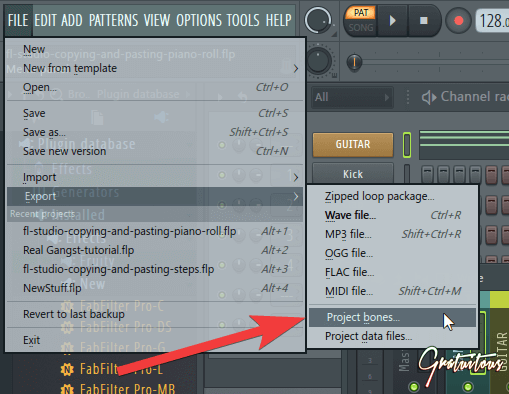How to Use Project Bones in FL Studio

The feature Project bones in FL Studio allows you to transfer elements between projects, as well as export a pattern from one project to another.
It’s actually really easy to use, but don’t get confused.
Project bones is not a proper form of backing up in FL Studio.
So let’s get started.
The default location of where Project bones are saved in FL Studio is within your User Data folder.
This is so you can access these Project bones from any project, and transfer elements in between projects easily.
To export Project bones, go:
File -> Export -> Project bones

I personally don’t really like to use the User Data Folder, but in this situation, I really feel it’d make it easier if you did. This is because you’ll see a Project bones folder within the browser which you can access inside any project:

Within the FL Studio browser, you can simply just drag and drop items.
For example, if you select the Scores folder, you’ll be able to drag and drop MIDI piano roll and step sequencer data into other sounds.
Project bones is actually a really powerful tool FL Studio has provided us.
It allows us to transfer:
- Automation Clips
- Mixer Insert States
- Channel Settings
- Piano Roll or Step Sequencer Data
- Plugin Effect States
Again, I’d only use Project bones to transfer elements in between projects.
If you’re wanting to backup, take advantage of Project data files / Zipped loop package.
Previously, I used to use Ctrl + C to copy and Ctrl + V to paste if I just wanted to transfer one sound’s data to another project.
This approach works not bad for just a single element, but if you’re wanting to copy many elements, just use the Project bones feature.
It will save you tons of time and works great!









